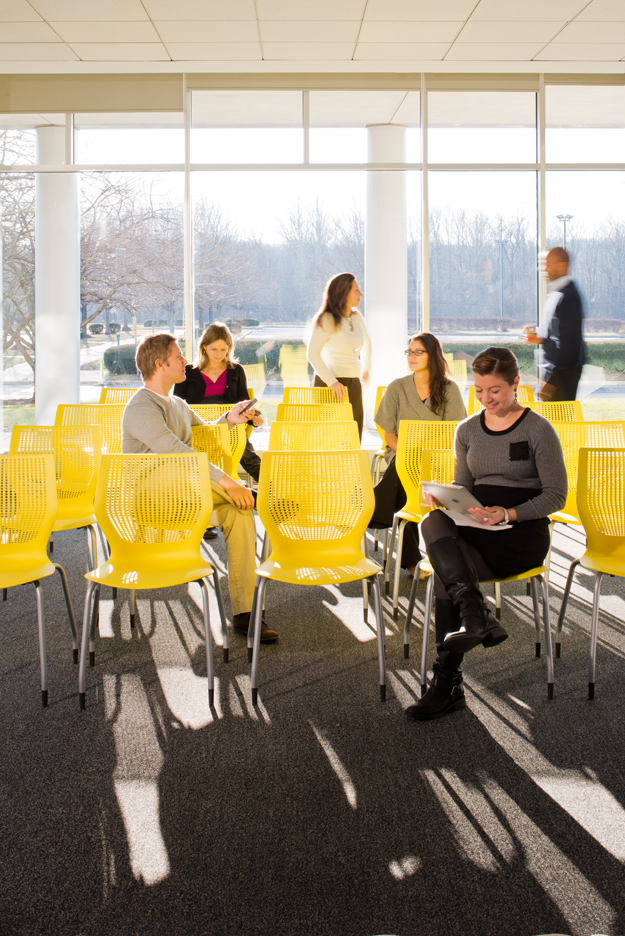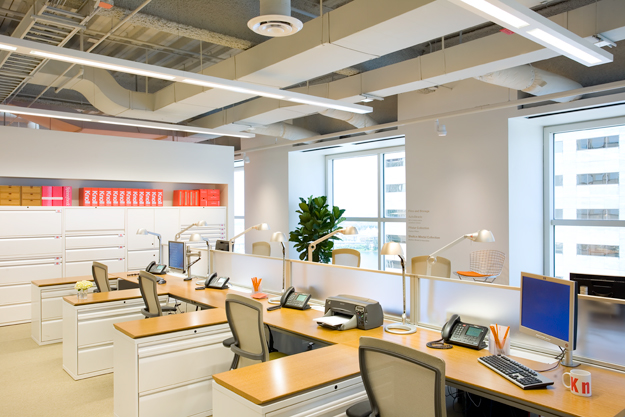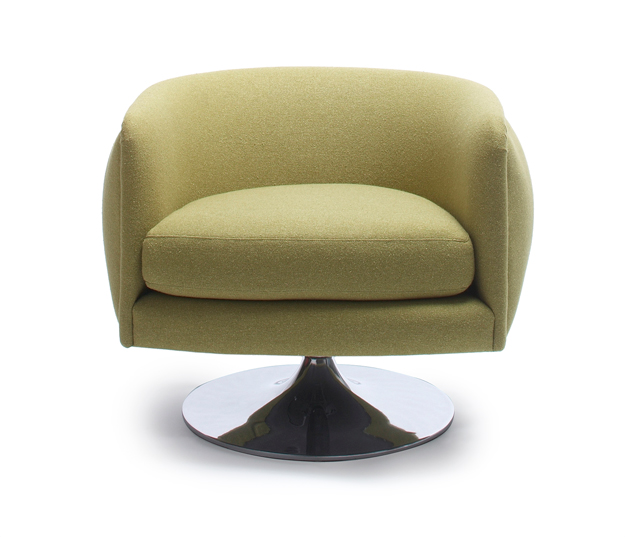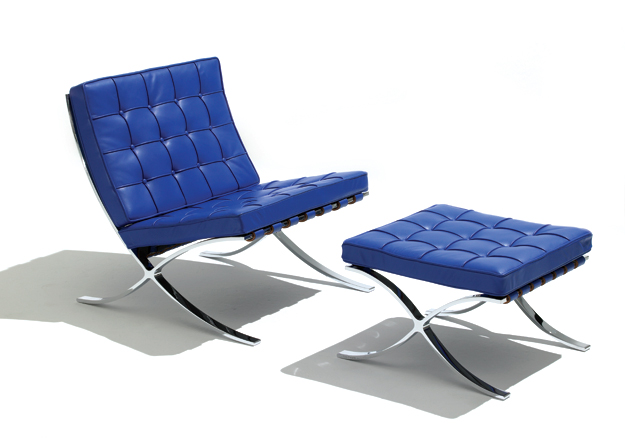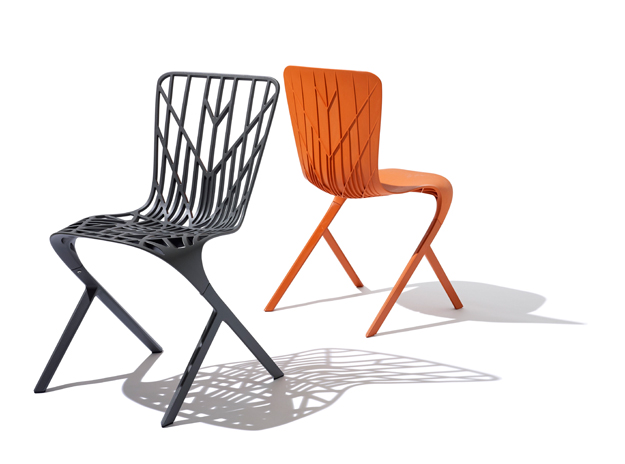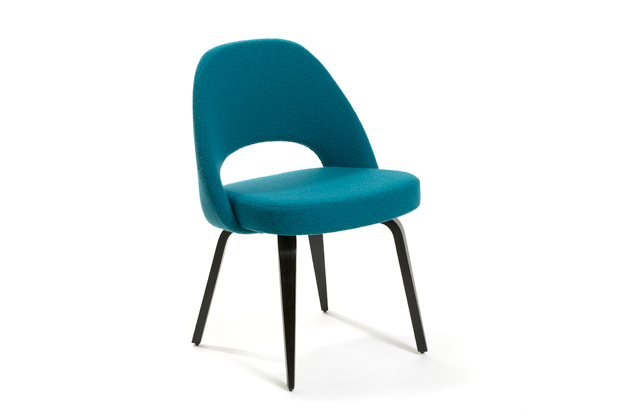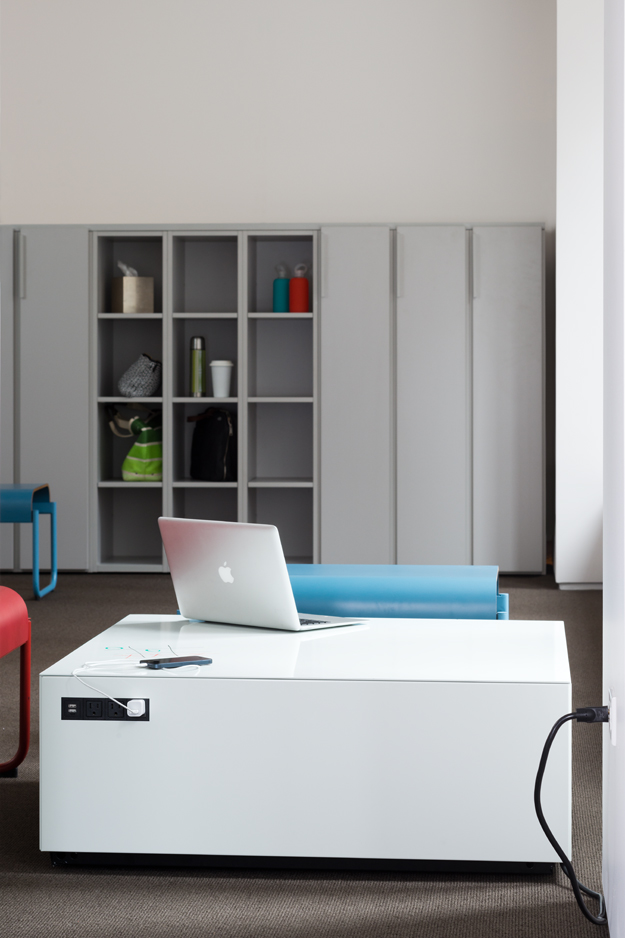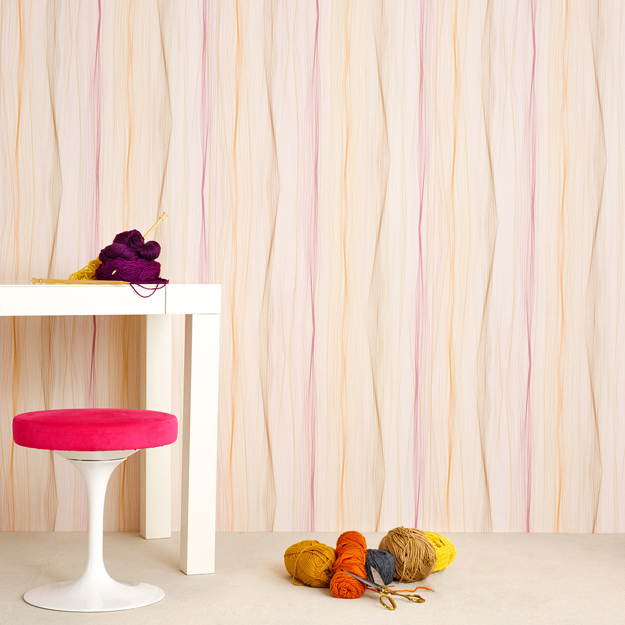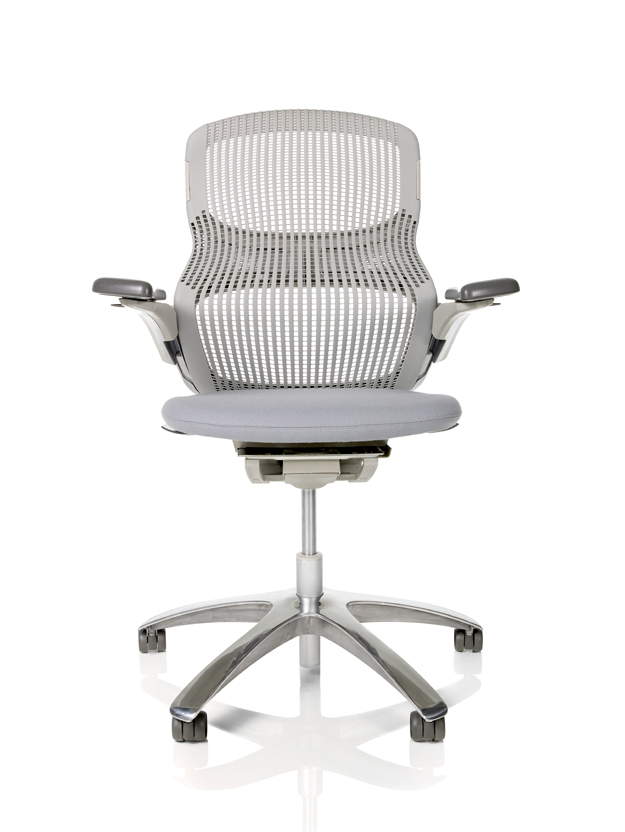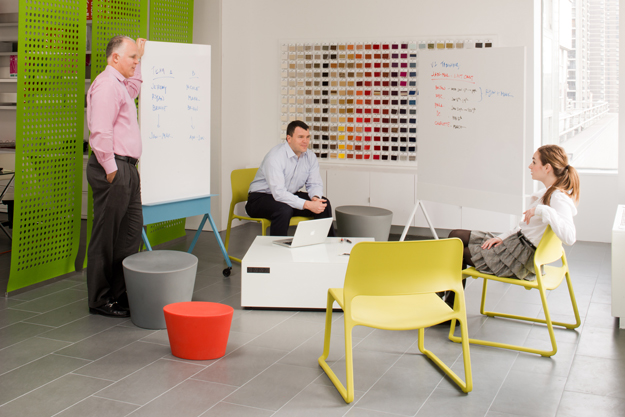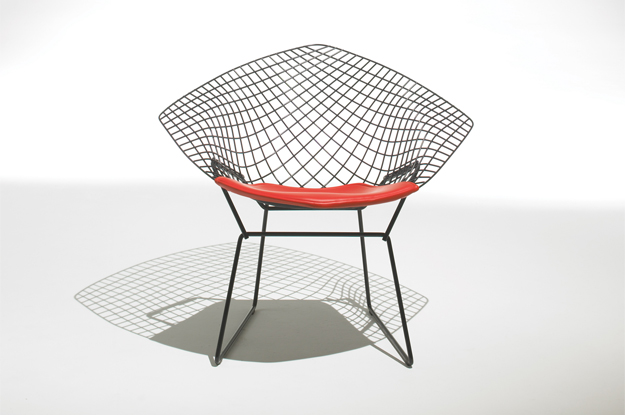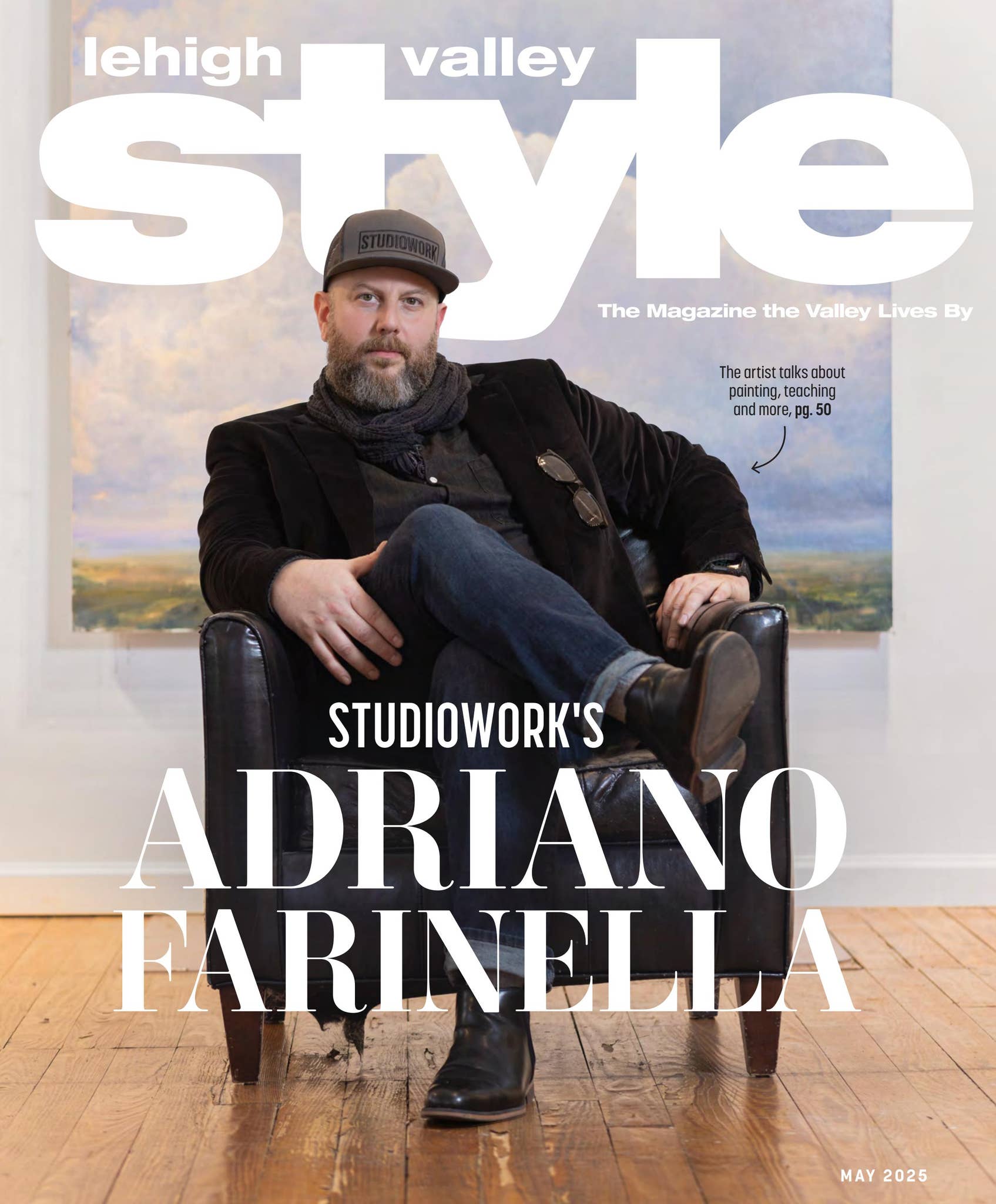
If someone told you that a company in our region partners with some of the world's most famous designers, would you know its name? If we mentioned its recent 75th anniversary, would that clue you in? The company is Knoll Furniture, and it's located in East Greenville. Its design acumen, international collaborations and success are noteworthy, and having it as a neighbor is enough to make any Lehigh Valley resident proud.
By Way of Perspective:
- Over 50 Knoll designs can be found in the permanent design collection of The Museum of Modern Art in New York City.
- Collaborators represent the who's who of architecture and design—Mies van der Rohe, Eero Saarinen, Frank Gehry, Harry Bertoia, Gae Aulenti, Rodarte, Irma Boom and more.
- Sales for 2013 were just south of $1 billion. It employs 850 locally and over 3,000 globally.
- Its customers range from IBM, Levi Strauss & Company and Coca-Cola to eBay and Twitter.
- It operates four production facilities in North America and two in Italy, with showrooms around the world.
In short, it's local, but it's oh-so international as well. “I think when Knoll came to East Greenville, it was kind of a fluke,” says Linda Kasper, the company's Client Services Manager. If you tour Knoll's museum, Kasper can rattle off amusing anecdotes about the company's history, whose timeline is filled with the names of luminaries from the architectural and design worlds. Featuring gems from the mid-century modern era, the tour is fun—like Goldilocks, you can sit on every one of their hip chairs until you find one that's just right. The company's walk through timeline provides the context for each design. In one case, Scandinavian designer Jens Risom used surplus Army parachute webbing for furniture during wartime, when supplies were scarce. The Knoll story holds its own place in American history, beginning with its roots.
As Kasper tells it, Hans Knoll was the son of a German furniture manufacturer. He came to New York City in 1938 and took on a partner by the name of Florence Schust, a talented designer. She began bringing in collaborators from the international design world, whose Bauhaus style became the company's hallmark.
Someone recommended the East Greenville area to the pair as a way to escape the city. Offering an attractive vista and lifestyle, plenty of open land and a railway for transporting goods, the small town soon became the headquarters of the fledgling company. Rumor has it that Hans also wanted to tap the talent of the Pennsylvania Dutch/German craftsmen in the area. Hans and Florence, who married, bought an old cigar factory in 1950 and began expanding.

Harmonizing Global Design
Florence Knoll had been mentored by the renowned Saaranin family and studied under a pioneer of modern architecture, Ludwig Mies van der Rohe. The Knolls partnered with eminent designers from all over the world, and bought the rights to statement pieces like the Barcelona chair. Thus the company's philosophy—Always Modern—was birthed.
This philosophy, along with Florence's famous connections, propelled the furniture company to the forefront of design. So did its research. Florence Knoll observed that intelligent design "strikes at the root of living requirements and changing habits." Propelled by this directive, Knoll studies the habits of those who will use its furniture and comes up with some fanciful yet functional pieces.
New product lines fit residential, office, hospitality and educational venues, offering anything from furniture to textiles, and fun products like the more recent Antenna®, Toboggan™, Power Cube, Scribe and Interpole™. Its most recent acquisition, FilzFelt, offers felt-based accessories. (Think architectural cut-felt room dividers, felt wallcoverings and things you've never thought of being made of felt, being made of felt.)
“Some of the designers we work with have an amazing eye for how these work together.”
“We play with a lot of different materials,” says Rob Waligunda, Knoll's Marketing Director. “Some of the designers we work with have an amazing eye for how these work together.” He says designers—especially the non-furniture designers Knoll works with—think differently and are “quirky.”
But he credits these global designers from the spheres of fashion, architecture, interior design and industrial design with bringing insights that allow Knoll to equip the modern workplace, combining minimalistic design with today's looks. Textures like leather, glass, marble and anodized aluminum are juxtaposed, as are pieces that were designed in the 1950s with others that were designed just last year.
Waligunda explains, “These pieces look like they belong together and like they belong in the same space regardless of when they were designed. It's the idea of integrating furniture and fashion to enliven and enrich the workplace in ways that stand the test of time.”
One caveat: while owning a Knoll chair is enviable, look carefully at what you place in your online shopping cart. While the Generation by Knoll® chair runs around $811, its legendary Womb Chair, designed in 1948 by Eero Saarinen, was reintroduced and sells for almost $5,000.
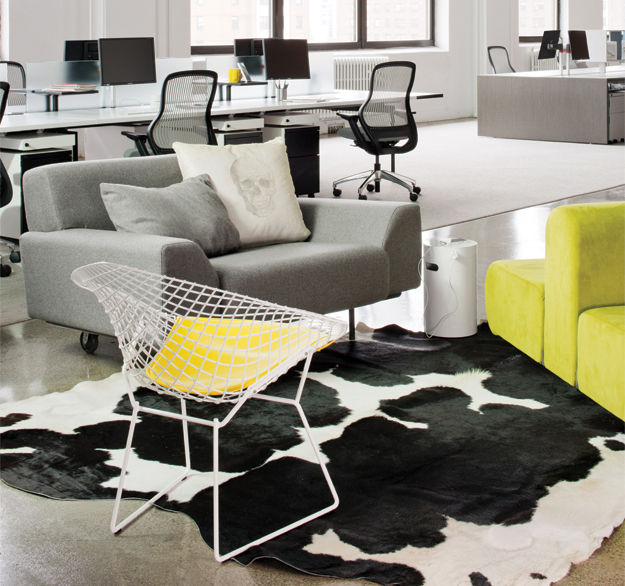
New Work Styles, New Solutions
But it's not all about the price—or the look, for that matter. Knoll's workplace research reveals a fundamental difference in the way people are working today. Rather than spending most of our time seated, at one desk, in one area, we collaborate more, we move more, we have casual business conversations in the hallway. If Knoll is right, we will soon be working in shared spaces known as media enclaves.
“Workers often spend half their time outside their primary workspace,” says Waligunda. “Public shared spaces—or activity spaces—create alternative settings for work.”
Their offerings for the office fall into three categories: the open plan, private offices and activity spaces. By way of example, the company's Activity Space power poles and benching furniture create a flexible office plan. Because technology changes so quickly, Knoll doesn't embed technology in its products; it accommodates it. Likewise, Knoll's Interpole™ helps configure technology in open spaces, unlike cubicles.
“A person never sits in one stationary position. It is ridiculous to work out a theoretical one position chair,” says Eero Saarinen
“Think West Coast,” says Waligunda, “very dynamic, freestanding and mobile, refreshing the traditional open office.” He points to height-adjustable desks and tables with rolling storage, mobile whiteboards, and power-cube tables where you can recharge mobile devices, video-conference and have an impromptu meeting. He says, “You want a workplace that's going to be innovative and exciting and flexible.”
And while the office market is huge for Knoll, the company was founded on the idea of bringing the best in modern design to not only the workplace but to residential interiors as well. Kasper observes, “Some of these pieces live equally in a business or residence. You would be hard pressed to find a Knoll employee who doesn't own a Knoll piece.” Debbie Heywood, one of the employees who also volunteers as a tour guide, has collected more than a dozen Knoll chairs over the 32 years she worked for the company. (Her mother also worked and retired from Knoll.)
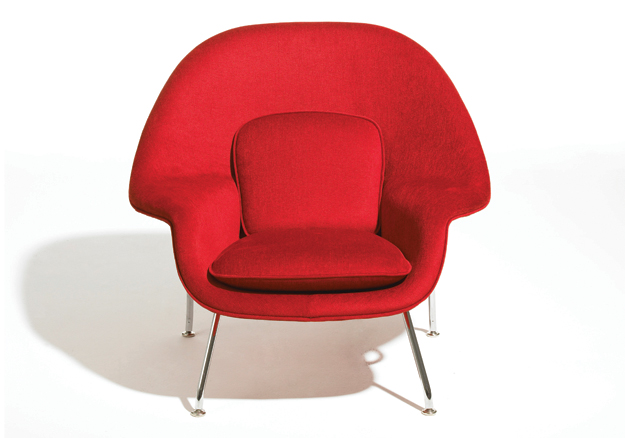
Local & Global
In addition to green awards, Knoll consistently wins design awards. These come from the Smithsonian and top architectural and design organizations. The most recent was in January 2014 for Knoll's first direct-to-customer retail showroom in New York City. If you stop in—and the next time you're on the Avenue of the Americas, you should—you'll see styles from all over the world combined in some awesomely designed spaces.
But the local angle, especially the museum, is worth checking out. Kasper concludes, “I think in the world today you need to be global, and the word global isn't a negative word. We're supporting everyone. We support the Pennsburg/East Greenville area, and they support us. I just think we're finding out that this idea of a community is just a little bit bigger than we thought.”
A tour through the factory offers several revelations:
- Collaboration: workers collaborate with engineers on self-directed teams, designing not only processes and lines but machinery that offloads repetitive and heavier work.
- The atmosphere: Natural light and ergonomics play a huge role. While some might view Knoll's newest building in East Greenville as wasting space, its many windows and green spaces bring light and life into the workplace. Sewing workers sit on—what else?—Knoll chairs, and standing workers perform tasks at hip-height. Unseen to any but the earliest visitors are the videos that offer stretching exercises for employees.
- Innovation: Cool tech-y processes fuse materials together for life. A material formerly used for truck mud flaps and brake pads is readapted by Knoll and DuPont, giving its Generation chairs a pliant, yet hard-wearing comfort. The chair's tagline says it all—“Sit as You Want.” If you took a quiz called “What type of sitter are you?” you would learn whether you are a percher, a side sitter or a backward sitter, or one of those lean-back, feet-up folks. These chairs accommodate all of us.
- The green story: Knoll has invested over $3 million in this area just since 2004. The company earned LEED Gold status from the U.S. Green Business Council for its Lubin Building. The impressive bit is that they designed it using methods they didn't know would become the standard. Covering the whole product lifecycle, from cradle (supply chain) to grave (disposal and recycling), Knoll holds all sorts of forestry and other certifications, reduces its CO2 emissions and diverts tons of used furniture from landfills. “Nothing in this building,” asserts Heywood, “ever gets thrown away.”

